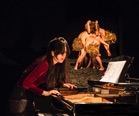
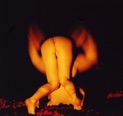
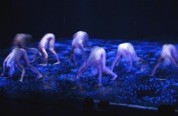
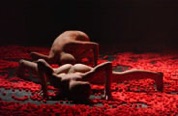
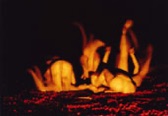
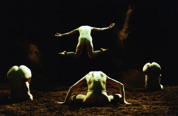
LUVOSmove® - the history
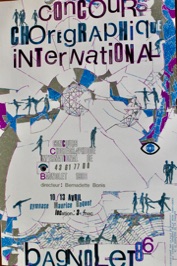
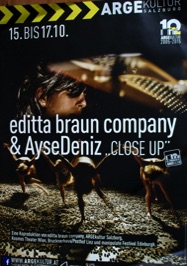
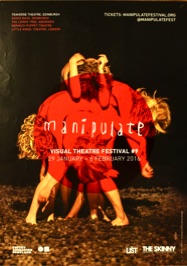
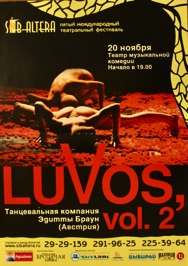
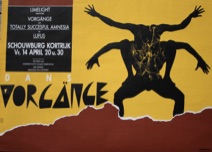
in Novosibirsk, Siberia
To this day, Editta Braun continues to develop this extraordinary form of movement theatre with her company and Thierry Zaboitzeff's music in her LUVOSmove® series, thus going far beyond the boundaries of conventional contemporary dance.
With "Luvos, vol. 2" in 2001, Editta Braun picks up the choreographic thread from 1986 and begins to spin it further, to explore it further. The unique aesthetic of an all-female body illusion theatre goes hand in hand with the creation of a veritable Luvos ensemble, whose dancers specialise in this repertoire.
Since then, Editta Braun has repeatedly reinterpreted the LUVOS universe in ever new contexts. "Lufus" becomes "Luvos".
"Luvos, vol. 2" (2001) can be read as a commentary on the frightening excesses of genetic engineering, as an evocation of fascinating and tantalising underwater worlds, as the independent world of thoughts and feelings of a concert pianist. The LUVOS creatures are humanoids, plants, worms, monsters, abstracts.
The real earth on stage is replaced by small red foam cubes, which have been part of the LUVOSmove® pieces in various colours ever since.
After 11 years of touring with "Luvos, vol. 2", Editta Braun's "planet LUVOS" (2012) creates an end-time underwater scenario entirely in blue and confronts the surreal LUVOS body worlds with a human form for the first time. The fact that the five (seven in the premiere cast) dancers in this production are initially seen on stage as human beings, a kind of ship's crew, and only "mutate" as the piece progresses, is also an innovation.
In 2015 (and 2017 with a new cast in a different version), the LUVOS creatures on the now grey stage of "CLOSE UP" do not face a dancer, but a concert pianist. The lemur-like LUVOS creatures, now with wigs, are understood here as the embodiment of the musician's inner life - doubts, fears, worries and the longing for freedom in an outwardly harmoniously perfect world of high culture.In the music interpreted live by Aysedeniz Gökçin (and in version 2.0 by Céline Thévenot) and composed by the performers and Thierry Zaboitzeff, dream and reality, inside and outside meet: dance and music in the interplay and contrasting competition of (syn)aesthetic elements.
Finally, in 2019, Editta Braun and three LUVOSmove® dancers with particular experience in this technique returned to Senegal, where it all began more than thirty years earlier. At Germaine Acogny's École de Sables in Toubab Dialaw and in Dakar, they performed the piece "Fanghoumé" (2019), named after the place where LUVOS originated, which was to become "Hydráos" (2020), the "oriental version" of which - in consideration of the host cultures - introduced a level of abstraction through green full-body suits and extreme lighting design.
In the same year, the company finally registered the name LUVOSmove® as a trademark for this movement language and type of body illusion theatre developed over decades.
With the artistic-scientific colloquium "LUVOSmove®: Insights and External Views" at the ABPU Linz (Anton Bruckner Private University) in 2021, Editta Braun begins to analyse her body illusion theatre together with the scientist Stefanie Schroedter and to teach it at the university.
In September 2022, the oriental version of "Hydráos" is awarded the Best Ensemble Performance Prize at the Cairo International Festival for Experimental Theatre and nominated for Best Director and Best Stage Design.
From 2021 to 2022/23, the dance film "LUVOS migrations", directed by Editta Braun & Menie Weissbacher, was created in Kenya and Salzburg, which was shown at dance film festivals worldwide and won several awards.
Editta Braun's need to bring the dancers' naked bodies back to centre stage arises from her filmic exploration of the language of movement: the occidental version of "Hydráos" will premiere at the Stadttheater Gießen in 2024.
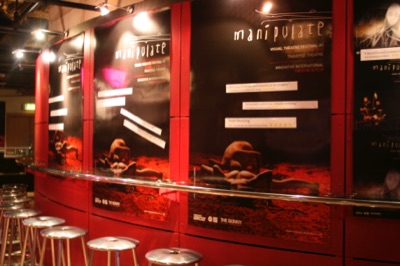
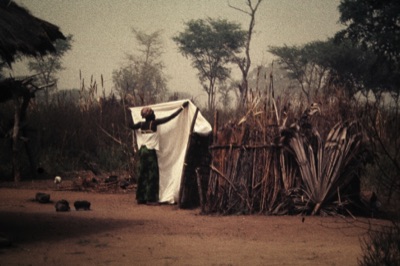
in Edinburgh
in Fanghoumé
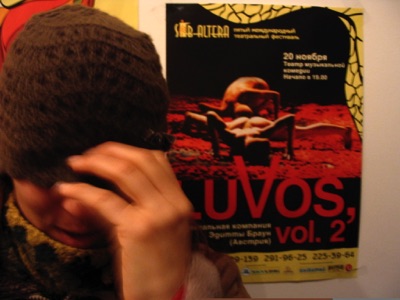
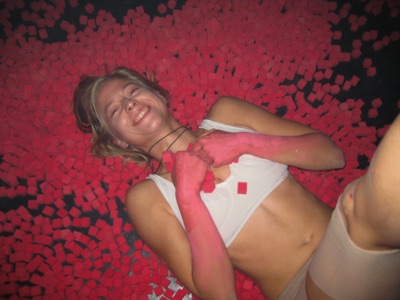
in Jerusalem
in Dakar
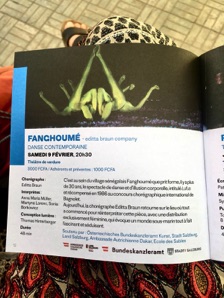
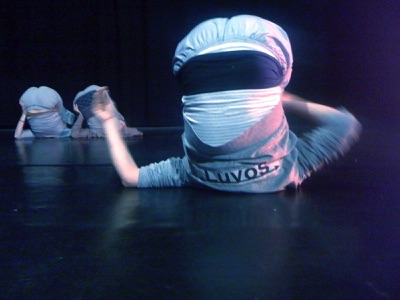
in Tallinn
From the sensational short piece "Lufus" by the Vorgänge collective, which was honoured at the Bagnolet/Paris choreography competition in 1986, to the Luvos productions by the editta braun company: "Luvos, vol. 2" (2001), "planet LUVOS" (2012), "Close Up" and "Close Up 2.0" (2015 and 2017), "Fanghoumé" (2019), later under the title "Hydráos", through to the dance film fiction "LUVOS migrations" (2022/23) and finally the "occidental version" of "Hydráos" in 2024.
The dance technique and aesthetic of LUVOSmove® developed by the editta braun company are continuously being developed and enriched. Movement research and the close interlocking of movement and sound vocabulary lead to a very special, specifically female form of musical body illusion theatre that requires a specially trained ensemble of female dancers.
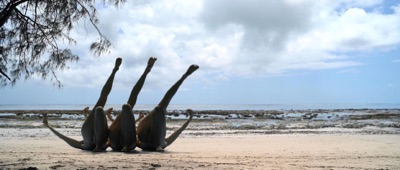
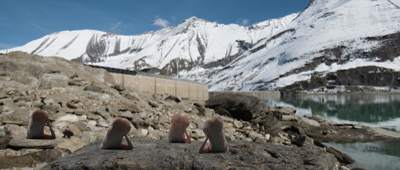
Before Editta Braun founded the editta braun company in 1989, she danced and choreographed in the collective "Vorgänge", which she formed in 1982 together with Beda Percht and other Salzburg sports students.
With its unusual fifth work "Lufus", this dance collective caused a sensation at the Concours chorégraphique international de Bagnolet/Paris in 1986 and won (ex aequo with Saburo Teshigawara) second place in the international competition as well as the festival prize for the most innovative choreography.
The premiere of the piece took place during a training programme for the collective in Fanghoumé in southern Senegal. Germaine Acogny, the grande dame of African dance, had invited the young dancers during the workshop to dance the piece at a ceremony for her grandmother, the animist priestess Aloopho, in the Sacred Grove, a hilly forest landscape. Some of the performers in the cast at the time are now well-known names in the field of contemporary dance and work as directors and performers beyond Salzburg: Beda Percht, Marion Hackl, Wolf Junger and Ekkehard Hager.
In the same year, a dance video for the stage play "Lufus" was shot for ORF-Kunststücke, documenting this "nucleus" of the later LUVOS productions: Eight men and women, almost naked in the backlight, the stage covered with earth, their skin covered with Luvos healing earth (the name of the healing earth gave the production its name), isolated limbs in an unusual perspective, naked legs, backs, buttocks, motionless, then slowly swaying, trembling, twitching ... right up to the creaturely leaping, wobbling, rolling and stamping of primeval-looking beings with strange masks. All accompanied by the music of the formation Art Zoyd, whose co-composer Thierry Zaboitzeff would later become a congenial musician for the company.